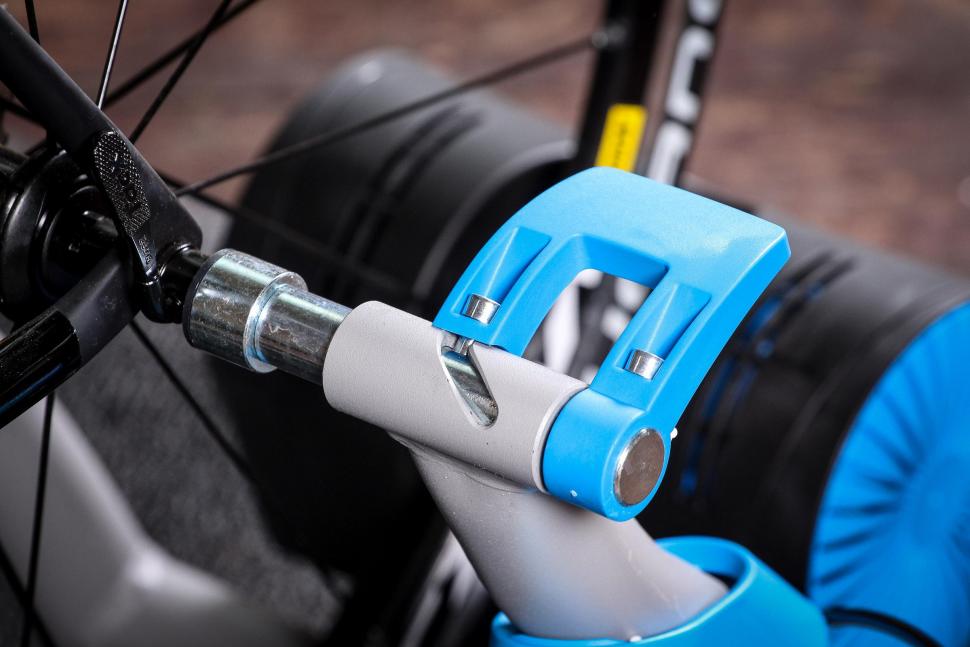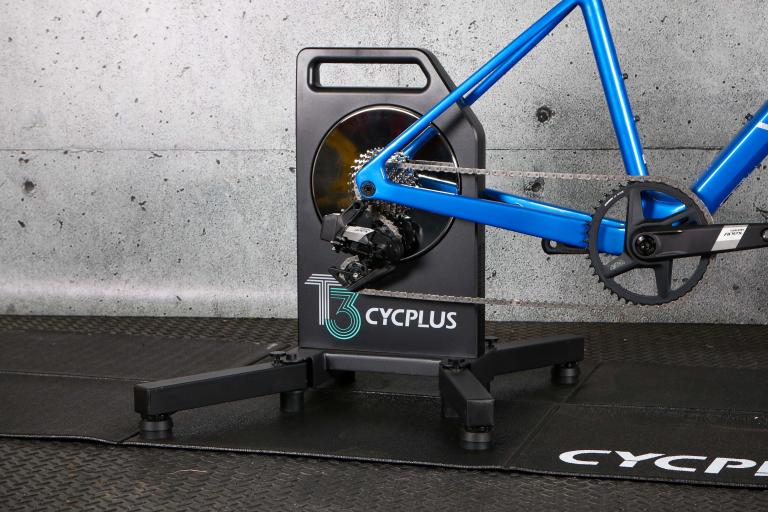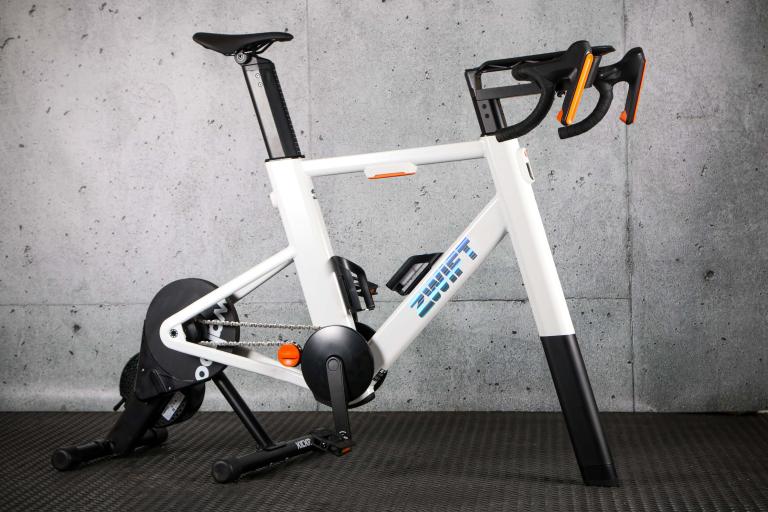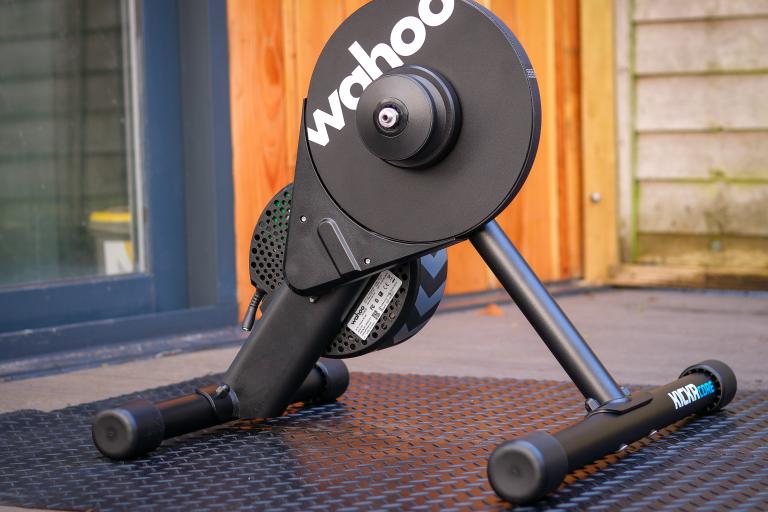- News
- Reviews
- Bikes
- Accessories
- Accessories - misc
- Computer mounts
- Bags
- Bar ends
- Bike bags & cases
- Bottle cages
- Bottles
- Cameras
- Car racks
- Child seats
- Computers
- Glasses
- GPS units
- Helmets
- Lights - front
- Lights - rear
- Lights - sets
- Locks
- Mirrors
- Mudguards
- Racks
- Pumps & CO2 inflators
- Puncture kits
- Reflectives
- Smart watches
- Stands and racks
- Trailers
- Clothing
- Components
- Bar tape & grips
- Bottom brackets
- Brake & gear cables
- Brake & STI levers
- Brake pads & spares
- Brakes
- Cassettes & freewheels
- Chains
- Chainsets & chainrings
- Derailleurs - front
- Derailleurs - rear
- Forks
- Gear levers & shifters
- Groupsets
- Handlebars & extensions
- Headsets
- Hubs
- Inner tubes
- Pedals
- Quick releases & skewers
- Saddles
- Seatposts
- Stems
- Wheels
- Tyres
- Health, fitness and nutrition
- Tools and workshop
- Miscellaneous
- Tubeless valves
- Buyers Guides
- Features
- Forum
- Recommends
- Podcast
review
£209.99
VERDICT:
Stable, smooth, Zwift-compatible standard home trainer with huge resistance range
Weight:
9,000g
Contact:
At road.cc every product is thoroughly tested for as long as it takes to get a proper insight into how well it works. Our reviewers are experienced cyclists that we trust to be objective. While we strive to ensure that opinions expressed are backed up by facts, reviews are by their nature an informed opinion, not a definitive verdict. We don't intentionally try to break anything (except locks) but we do try to look for weak points in any design. The overall score is not just an average of the other scores: it reflects both a product's function and value – with value determined by how a product compares with items of similar spec, quality, and price.
What the road.cc scores meanGood scores are more common than bad, because fortunately good products are more common than bad.
- Exceptional
- Excellent
- Very Good
- Good
- Quite good
- Average
- Not so good
- Poor
- Bad
- Appalling
Tacx's Booster Turbo Trainer is stable, easy to set up and folds away for convenient storage or to pop in the car to take to races. Its main features are that it can provide a very high level of resistance and its fan and magnetic resistance unit are surrounded by a plastic housing, so you can't burn yourself on them when they get hot. It's compatible with Zwift, so it's a relatively inexpensive way to get into connected training, especially as it can typically be found for a lot less than its £210 RRP.
Apparently the Booster used to come assembled, and with a bag for transport. It's cheaper now, but you have to put it together yourself and you don't get the bag. Swings and roundabouts, and it's straightforward enough to put together.
> Find your nearest dealer here
You get a Tacx quick-release skewer so that your bike fits securely into the clamp, and a front wheel block is supplied to keep your bike level.
A control lever on your handlebar allows you to change the effort required to turn the magnetic resistance unit from not-very-much to you've-got-to-be-joking in 10 increments. If you're going to change the resistance a lot, you'll need to clamp it as firmly as possible as the lever itself is quite stiff.
Resistance is this unit's raison d'etre. Tacx claims it takes 1,050 watts to get to 40km/h in the highest setting, and I can believe it. I can barely get it moving in this setting, even in a low gear, and I've seen commentary questioning that anyone – even a pro – needs this much resistance. However, if you do want to practise your maximum-output sprints, it's there for you.
My main use for the Booster was with Zwift, and that calls for the far less brutal second-lowest setting. That still affords plenty of resistance when pedalling a high gear, and gives the pedalling action a smooth feel. It's not quite like riding on the road, but it's perfectly acceptable, and far better than the ancient fan-only trainer it replaced.
With a bike installed, the Booster is very stable thanks to its widely splayed feet. It clamps the bike firmly, and both closing the clamp onto the quick release and tweaking the roller position to touch the tyre are easy.
It's also reasonably quiet. You don't have to crank your music up so loud the neighbours will complain, and you might even get away with using it in a flat without annoying the folks downstairs. That's not to say it's silent, of course; no trainer is. But it's easy to live with.
For your Zwift sessions, you use Zwift's virtual power feature. Zwift has worked out the power curve of the Booster's resistance unit, and tells you how much power you're putting out based on this. As such, it can only be approximate, but it gives you some numbers to work with to measure your effort and improvement, based on how hard you are actually working. That's still an improvement on just using your heart rate, which can vary according to how you're feeling.
I've been using the Booster to explore Zwift as I try to rebuild some fitness after a disastrously inactive 2016. Having a screen in front of you telling you how hard you're working and, if you're following a workout, when to make an effort and when to go easy, makes indoor training quite good fun. That's something I never thought I'd be writing.
> Turbo training tips — get the most from your home trainer
I'm not alone. The advent of Zwift and other interactive training systems means retailers tell us they now sell as many home trainers in summer as winter. As well as the game aspects of Zwift and its ilk, they provide training that's more targeted and intense than you can easily manage on roads infested with SMIDSY drivers.
The Tacx Booster is a well-made, sensibly-priced entry into home training, with the added extra of a very high resistance range so you can severely torture yourself if the mood takes you. Recommended.
Verdict
Stable, smooth, Zwift-compatible standard home trainer with huge resistance range
road.cc test report
Make and model: Tacx Booster Ultra High Power Folding Magnetic Trainer
Size tested: n/a
Tell us what the product is for, and who it's aimed at. What do the manufacturers say about it? How does that compare to your own feelings about it?
The Tacx Booster is a 'basic' trainer with no built-in connectivity or interactivity. Its main features are a magnetic resistance unit with flywheel that can provide very high resistance against your pedalling input; adjustable resistance across a 10-setting range; and a cover over the flywheel to help keep the noise down and stop you accidentally touching hot parts.
It's aimed at everyone who wants to train away from the weather, especially those who want high resistance to simulate steep climbs. With the necessary sensors, you can use it with Zwift.
Tacx says: "The Booster is the most powerful basic trainer and can generate high resistance at low speeds. If you set the handlebar resistance lever to a high position you have to exert a lot of force while advancing slowly, just like when you tackle a steep climb. This makes the Booster highly suitable for power based workouts.
"Manual resistance control - The Booster is controlled by a lever on your steer, allowing you to set the resistance as required. The higher the position, the more resistance."
Tell us some more about the technical aspects of the product?
Features
Type of trainer Basic trainer with magnetic brake
Magnets 2x8 Permanent ferrite magnets
Transmission Roller, 30 mm
Electrical requirements No mains voltage required
Power indicator (Wattage) None
Connection indicator (ANT/BT) None
Firmware upgradable No
Suitable bikes Race, Tri & MTB , if necessary with axle skewer
Supplied with Front wheel support , Quick release for racing bikes and mountain bikes (5 mm)
Specifications
Max. power (40 km/h) 1050 Watt
Max. slope N/A
Simulation of descent No
Max. torque 17Nm
Max. brake force 50 N
Flywheel Actual, 1.65kg
Flywheel effect 9.18 kg (20.2 lbs)
Footprint (lxw) 675x650mm (26.6x25.6 in)
Height 410 mm (16.1 in)
Dimensions when folded 565x410x245mm (22.2x16.1x9.65 in)
Weight 8.53 kg (18.8 lbs)
Article number T2500
Data output and control
Wireless communication None
Control by Handlebar resistance lever with 10 positions
Rate the product for quality of construction:
8/10
Solidly made and stable.
Rate the product for performance:
8/10
Rate the product for durability:
8/10
Rate the product for value:
6/10
At its £210 RRP I think it's a shade expensive, but you don't have to shop around much to find it for a far more sensible £155 or so.
Tell us how the product performed overall when used for its designed purpose
The pedalling action is smooth, putting your bike in is quick and easy. It does the job well.
Tell us what you particularly liked about the product
Stability; smooth 'riding' feel.
Tell us what you particularly disliked about the product
A built-in speed or power sensor would be nice, but it's not unreasonable for it to be absent at this price.
Did you enjoy using the product? Yes
Would you consider buying the product? Yes
Would you recommend the product to a friend? Yes
Use this box to explain your score
This is a very good home trainer at a sensible price. It's easy to use, works with the cycling video game du jour, Zwift, and is decently constructed. It's a solid 'very good', but while there's nothing bad about it, there's nothing outstanding that would lift it up to the next level.
About the tester
Age: 48
I usually ride: Scapin Style My best bike is:
I've been riding for: Over 20 years I ride: Most days I would class myself as: Expert
I regularly do the following types of riding: commuting, touring, club rides, general fitness riding, mountain biking
John has been writing about bikes and cycling for over 30 years since discovering that people were mug enough to pay him for it rather than expecting him to do an honest day's work.
He was heavily involved in the mountain bike boom of the late 1980s as a racer, team manager and race promoter, and that led to writing for Mountain Biking UK magazine shortly after its inception. He got the gig by phoning up the editor and telling him the magazine was rubbish and he could do better. Rather than telling him to get lost, MBUK editor Tym Manley called John’s bluff and the rest is history.
Since then he has worked on MTB Pro magazine and was editor of Maximum Mountain Bike and Australian Mountain Bike magazines, before switching to the web in 2000 to work for CyclingNews.com. Along with road.cc founder Tony Farrelly, John was on the launch team for BikeRadar.com and subsequently became editor in chief of Future Publishing’s group of cycling magazines and websites, including Cycling Plus, MBUK, What Mountain Bike and Procycling.
John has also written for Cyclist magazine, edited the BikeMagic website and was founding editor of TotalWomensCycling.com before handing over to someone far more representative of the site's main audience.
He joined road.cc in 2013. He lives in Cambridge where the lack of hills is more than made up for by the headwinds.















Im sure their falling profits have nothing at all to do with Brompton being overstretched making huge & unprecedented changes to their model...
Why no details about the collision itself?...
But in the ads they're more far more convenient and quick though?
Well, brutally, it's because it's reminiscent of images from Hiroshima.
But not linked to PTFE. Do keep up 003.5, the context isnt that hard to see.
£125 for a wifebeater. Really?
Such a shame...
You don't fit in here - drivers and cyclists variant
I like the uptick in blogs in 2025 - particularly this one. Keep them coming Road.cc!
And, BTL in the comments: "This is a problem and so are cyclist's headlights. Why do they not have them dipped??"